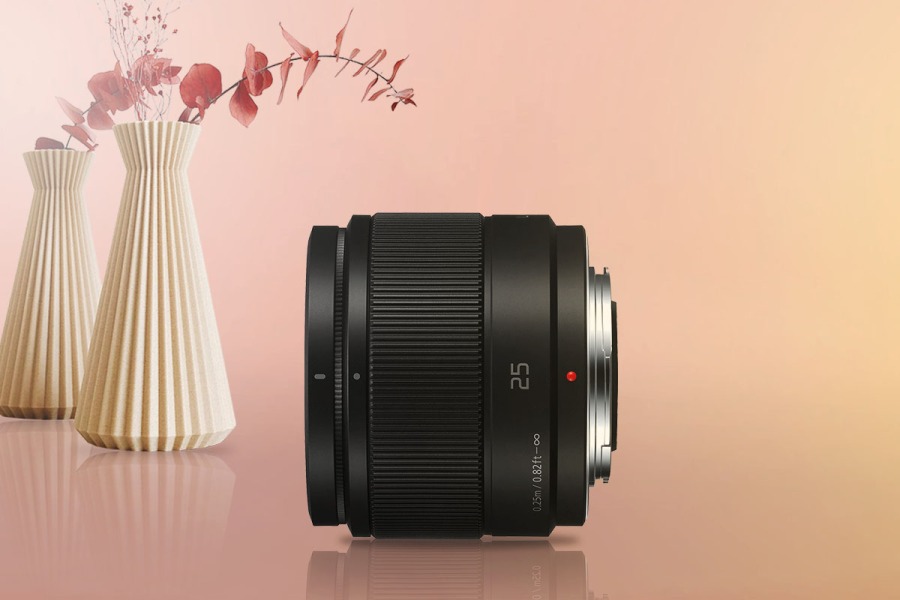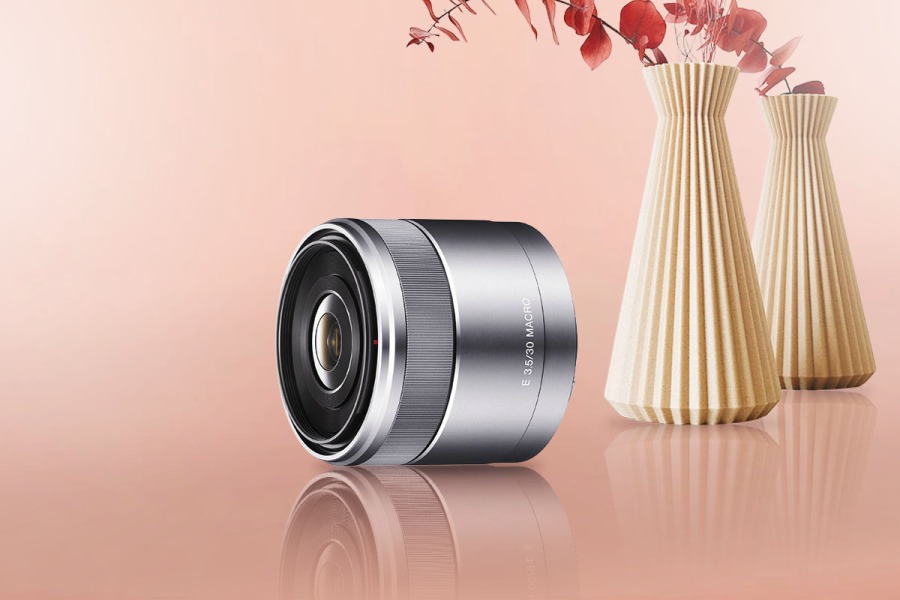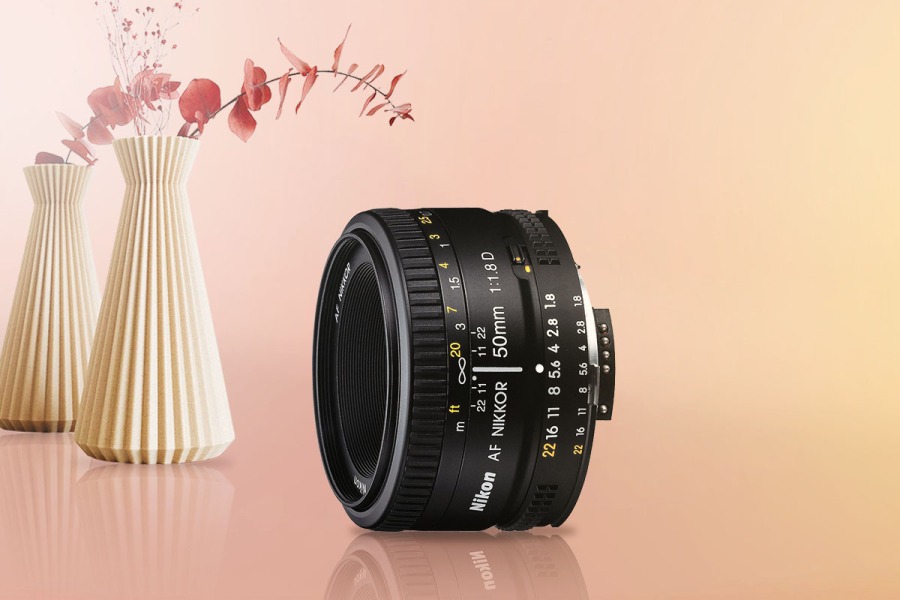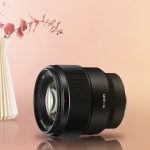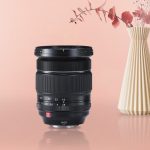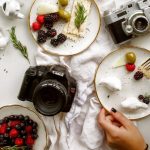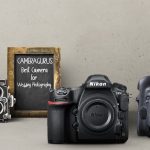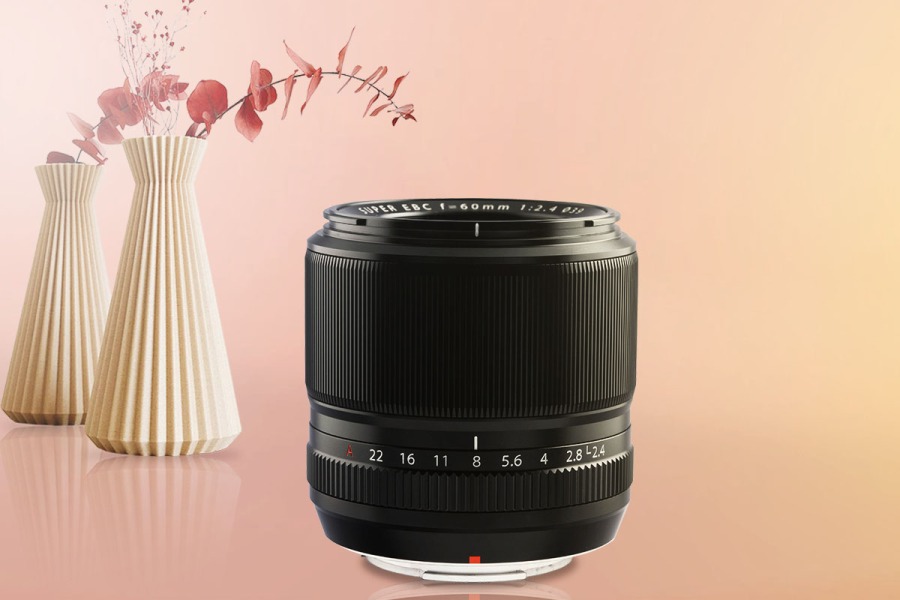
Restaurant owners worldwide love to show what their kitchen is capable of, mainly offering their specialties via photography! It is considered a type of photography, which has made some photographers fall in love with it.
If you just found a camera for photographing food, the time has come to complete the gear!
In this article, I’ve chosen some of the best lenses for food photography.
A Quick Look at My Favorite Lenses for Food Photography
| Image | Product | Features | Price |
|---|---|---|---|
Best Entry-Level  | 9.7 | Check Price On Amazon | |
Best Short Telephoto  | 8.6 | Check Price On Amazon | |
Best Budget  | 8.5 | Check Price On Amazon | |
Best Short TelephotoBest For Close-Ups  | 8.8 | Check Price On Amazon | |
Best For Macro  | 8.6 | Check Price On Amazon | |
Best For Shallow Depth Of FIeld  | 8.2 | Check Price On Amazon |
Key Takeaways
- Food photography is becoming even more well-known, particularly among restaurateurs.
It’s time to finish your excellent camera, if you already have one, with a fantastic lens for taking pictures of food.
If you had me the chance to select for you, I would unquestionably go for the Sony SEL30M35 30mm f/3.5.
Additionally available here is the Panasonic LUMIX G Lens 25mm F1.7 ASPH, which offers outstanding performance at a reasonable cost.
Food photography is fascinating, so if you want to be able to capture your food in the most realistic way possible, make sure the lenses you’re using are of the best possible quality and have all the capabilities they need.
Without further ado, let’s see which ones are the best lenses for food photography!
The Top Six Best Lenses for Food Photography
6. Fujinon XF 60mm F2.4 R – Best Short Telephoto
What I Like
- Amazing sharpness
- Compact
- No distortion
- Includes metal hood
What I Don’t Like
- focus on the slow side
The first lens for food photography on this article comes from the Fuji brand and it is one of the greatest fits for your Fujifilm camera. It is a telephoto macro lens, that does the job perfectly when you have to show details of a particular food!
Hitting it off with the design firstly, this lens has a quite compact body and it measures 4.2 x 2.52 inches and it weighs about 7.58 ounces.
The coating type, that Fuji added to this lens is the Super EBC Coating. It is the latest Fuji coating, that does a great job considering reducing flare and ghosting.
The elements that it has are full 10 in number, and they are divided into 8 groups. Those elements include one aspherical element and one ED element.
Being a macro lens for food photography, the focal length works only at 60mm and it is more than enough when it comes to food photography.
The aperture is f/2.4 which works perfectly in low light environments. However, the aperture diaphragm is a 9-blade circular one and it provides an amazing bokeh effect. Try using it when taking pictures of the plate from above!
Why should you buy it?
This lens provides a fantastic bokeh effect, and that’s enough reason to purchase it.
5. Panasonic LUMIX G Lens 25mm F1.7 ASPH – Best Budget
What I Like
- Reasonably sharp
- Minimal distortion
- Fast and quiet to focus
- Affordable
What I Don’t Like
- No weather sealing
From Fuji, let’s move on to another lens for food photography, in this case, I chose a lens from the Panasonic brand. There are many great Panasonic cameras and this lens fits almost all of them, in the best way possible. The lens is a standard wide-angle one.
Measuring 4.41 x 3.23 inches, and weighing 7.84 ounces, this lens is Panasonic’s most compact lens. It is very well done and it is amazing when in use because it has a body just as it is supposed to be.
With the Nano Surface Coating, you will notice that the lens can do a perfect job when it comes to color fidelity, flare, and ghosting.
Coming at the optical construction is important to mention that Panasonic added to this lens 8 elements divided into 7 groups. There are noticed easily two aspherical elements and one ultra-high refractive index element (for no reflection).
The focal length is fixed again, and it works only at 25mm. This focal range makes the lens a wide-angle one, and you can shoot pictures of food in the greatest way possible.
When it comes to the aperture, this Panasonic lens works at f/1.7. Always remember, the lower the number there’s the wider aperture; that means that on this lens we have a wider aperture than in the one mentioned above. The aperture diaphragm is a 7-blade one and it helps you bring the bokeh effect.
Why should you buy it?
If you are on a tight budget and looking for an affordable lens, then this lens is the best option.
4. OLYMPUS M.Zuiko Digital ED 60mm F2.8 – Best For Close-Ups
What I Like
- Minimal distortion
- Focus limiter switch
- Weather resistant
What I Don’t Like
- Pricey
Olympus has some amazing cameras that are used by many photographers all around the world! That’s why I’ve chosen a telephoto-macro lens again, and it will definitely help you bring some amazing sharp macro shots.
This lens has a very interesting design on just a first look; it is a bit different from the other lenses. The measurements are 3.23 x 2.2 and its weight is 6.6 ounces. Super compact and super lightweight! What would you need more from a lens? What comes to your mind is weather resistance, right? Well, this lens is weather-sealed too! It can resist any type of weather condition!
You may have heard about the ZERO coating that comes from Olympus. It means Zuiko Extra-Low Reflection Optical. As you can notice, hence the name, with that type of coating, no reflections enter your camera or your photo.
The division of the elements is into 10 groups, and the full number of elements is 13. It is important to be mentioned here is that on this lens is added one extra-low dispersion element and three high-refractive index elements; just as in the one mentioned above.
The focal length is 60mm; making it a macro lens, that is very sharp, and you will notice that when taking pictures with it, the pictures come very clear and fully detailed.
The aperture is f/2.8 and as all of you may know, the f/2.8 aperture is the most commonly used aperture in lots of lenses. The diaphragm of the aperture is again a 7-blade one.
Why should you buy it?
Food photography also requires close-up photos, and this lens will give you the perfect close-up images.
3. Sony SEL30M35 30mm f/3.5 – Best For Macro
What I Like
- Compact
- Lightweight
- No distortion
- Affordable
What I Don’t Like
- Omits stabilization
Nowhere to be missed, a Sony lens for food photography! The Sony SEL30M35 is one of the most used lenses for Sony cameras that have an E mounting type. It is a very precise macro lens that has a great sharpness within and helps you bring clear food photos. It’s one of the most popular macro lenses out there.
The prettiest lens you can ever find! With a fully different grey color, this lens can be called the most special one on our list, all based on its design. The measurements of this lens are 2.2 x 2.44 inches and the weight is 4.9 ounces. It is definitely a portable lens.
In this lens, is not quite sure what type of coating is added, but still, we have an assured number when it comes to the elements. The elements are 7 in number and the division is into 6 groups. You can easily notice one ED element and three aspherical elements.
Being in between the Panasonic and the Olympus lens, this Sony lens has a focal length of 30mm. The 30mm focal length allows you to capture pictures with a little bit of background added, and by that, we get that it is a great one when we deal with food photography in general.
The aperture, on the other hand, works at f/3.5. As some of you may already know, the f/3.5 of aperture works perfectly when it comes to portraits with an 18mm lens, but what about the 30mm? It becomes one of the greatest for food photography! Just as needed! If you want to use the bokeh effect, the aperture diaphragm is a 7-blade one and it will bring to you some great pictures with blurred backgrounds.
Note that this is not a zoom lens, meaning zooming in and out with this lens is not possible. If you want to do that, you should purchase a zoom lens instead.
Why should you buy it?
This is a very precise macro lens with excellent sharpness within and helps you bring clear food photos.
2. Nikon AF FX NIKKOR 50mm f/1.8D – Best For Shallow Depth Of Field
What I Like
- Compact
- Sharp
- Affordable
What I Don’t Like
- No vibration reduction
What is this lens and why was it made? Hence the name, this lens comes from the amazing Nikon brand that delivers us amazing cameras! If you already own one of those cameras, the next thing to do is to use this Nikon standard lens, to practice food photography. This is a popular one amongst food photographers.
As a whole, this food photography lens measures 2.5 x 1.54 inches and its weight is 5.5 ounces. Even though it is small and lightweight, the body of the lens is quite strong and it is considered as a lens that could last for a pretty long time.
Nikon added its famous Super Integrated coating to this lens, and it helps you capture amazing pictures with no aberration and with an amazing color accuracy overall.
The elements are all 6 added into 5 groups, and the most important one still stands the aspherical element which has only one job; to correct distortions while changing the refractive index. I assure you that it does the job completely how it should be done, there’s no distortion in any way.
The focal length of this lens is 50mm which differs in a way from the other lenses that I mentioned above. Therefore, this lens is a standard one based on its focal length.
As long as the aperture is concerned, in this lens, we deal with a rounded 7-blade diaphragm which is quite fine when using the bokeh effect in general or the selective focus. Ther’s the aperture range as well, which brings pictures in f/1.8; again it is a bright aperture that offers you an easier job and it allows you to work easily with the focus techniques.
Why should you buy it?
Nikon as a brand delivers fantastic products, and a Nikon lens is worth buying.
1. Canon EF 50mm f/1.8 STM – Best Entry-Level
What I Like
- Lightweight
- Sharp at f 1.8
- Silent, smooth video focus
- Affordable
What I Don’t Like
- Omits stabilization
- Hood not included
Now, as the last one, I’ve chosen a Canon lens! This food photography lens is again a standard one; it has all the features that you need. What shouldn’t be left unmentioned is that this lens is one of the most used lenses from the Canon brand because it works perfectly when used in any type of photography.
This lens has a full rugged body! It is a very strong lens that includes a metal mount! The measurements are 1.54 x 2.72 and its weight is 5.60 ounces. That can only mean one thing, the lens is small and lightweight and it is very easy to carry it around wherever you go.
Just as Nikon, Canon added the Super Spectra Coating too, and its job is to correct all the aberrations that may occur while taking a picture, in this case for food photography.
The elements that this lens owns are 6 and they are added into 5 groups. There’s not a specific element that does a particular job, but the elements on this lens, work combined with the coating and bring amazing sharp pictures.
As seen in its name, the focal length of this lens works at 50mm. Now, I know that you may have heard that 50mm is a focal length when it comes to portraiture mostly, but still, it does a perfect job with food photography too.
The aperture of f/1.8 is also one of the most used apertures while shooting in low light. That gives a priority to this lens to be used in any type of lighting. The aperture diaphragm is a rounded 7-blade one and provides a great bokeh effect.
Overall, it’s a pretty good lens that is very popular amongst food photographers.
Why should you buy it?
This lens is small, lightweight, and easy to carry around wherever you go.
Things to consider before buying the best lens for food photography?

Type of Camera
The type of camera you are going to use for food photography is very important too. For the best food photos, I’d recommend a full-frame camera. A full-frame camera is better than a regular camera in many ways.
Both Mirrorless cameras and DSLR cameras work well when it comes to taking food photos.
Type of Lens
During food photography, you can definitely use different types of lenses! The lenses that are added in this article mostly include telephoto, macro, and standard lenses, which all in one word are prime lenses because they work with a fixed focal length.
I also recommend you read our article on the best variable ND filters, because those will improve your shot.
Keep in mind that zoom lenses can be used too, but still, they are not the best choices when it comes to food photography in general.
Focal Length
As already mentioned a little bit above, the lenses that I chose are all prime fixed lenses, that work only with one focal range. So, all in all, you should choose lenses that are fully fixed and don’t move in any way.
The focal length that is great for food photography stands between 25mm and 90mm.
Aperture/Bokeh Effect
Any type or any range of aperture does a great job for food photography! However, here I would like to mention something else. The aperture diaphragm of the lens! It is a feature that every type of lens owns, and it is related to the bokeh effect.
Most food photographers prefer to use the bokeh effect when taking food photos.
Feel more than free to use bokeh when taking pictures of food, personally, I use it when I deal with photographing plates.
Frequently Asked Questions
Why would you take pictures of food?
As mentioned at the beginning of this article, food photography is mostly related to restaurant owners for their publicity. They do so in order to show their work and gather clients.
What is the coating in lenses?
The coating of a lens refers to the parts of the lens that help you capture pictures with any kind of flare or ghosting in any environment where you may be using the lens. Lenses that have coatings, special ones will boost the performance of the lens in many ways.
Can I use macro lenses for food photography?
Macro lenses are definitely amazing, and when it comes to food photography, it is definitely one of the greatest types of lenses to use. They help you capture more details, and you will be showing the world some of the greatest food photographs!
Which one of the lenses is the best lens for food photography? – Final Words
As you can notice, I have added and listed different types of lenses, and I know that choosing one of them isn’t the easiest job to do. That is especially if you are a professional photographer!
There is no particular best lens for food photography! However, as you can notice, I tried to add lenses from different brands so that you can choose based on what type of camera you own. Canon, Nikon, Sony, Olympus, Panasonic, and Fujifilm! I did that so you can easily choose between them.
Have in mind that you should always consider your budget too! They all come in different price ranges.
You would do a better job if you consider your budget as the first thing, the type of camera that you use, and then choose the lens.
So, this is it you guys, my article regarding the best food photography lenses! I really hope that this article will help you choose!
Further Reading
At the beginning of this article, I mentioned that you should complete the gear! Therefore, to make the gear more and more complete I would advise you to take a look at some softboxes used for food photography and since food photography is considered an over-head shot, there are some tripods especially made for over-head shots!
Have fun!

Wedding Photographer
From nature to urban landscapes, my camera is my tool for expressing my creativity and telling stories through my lens.
